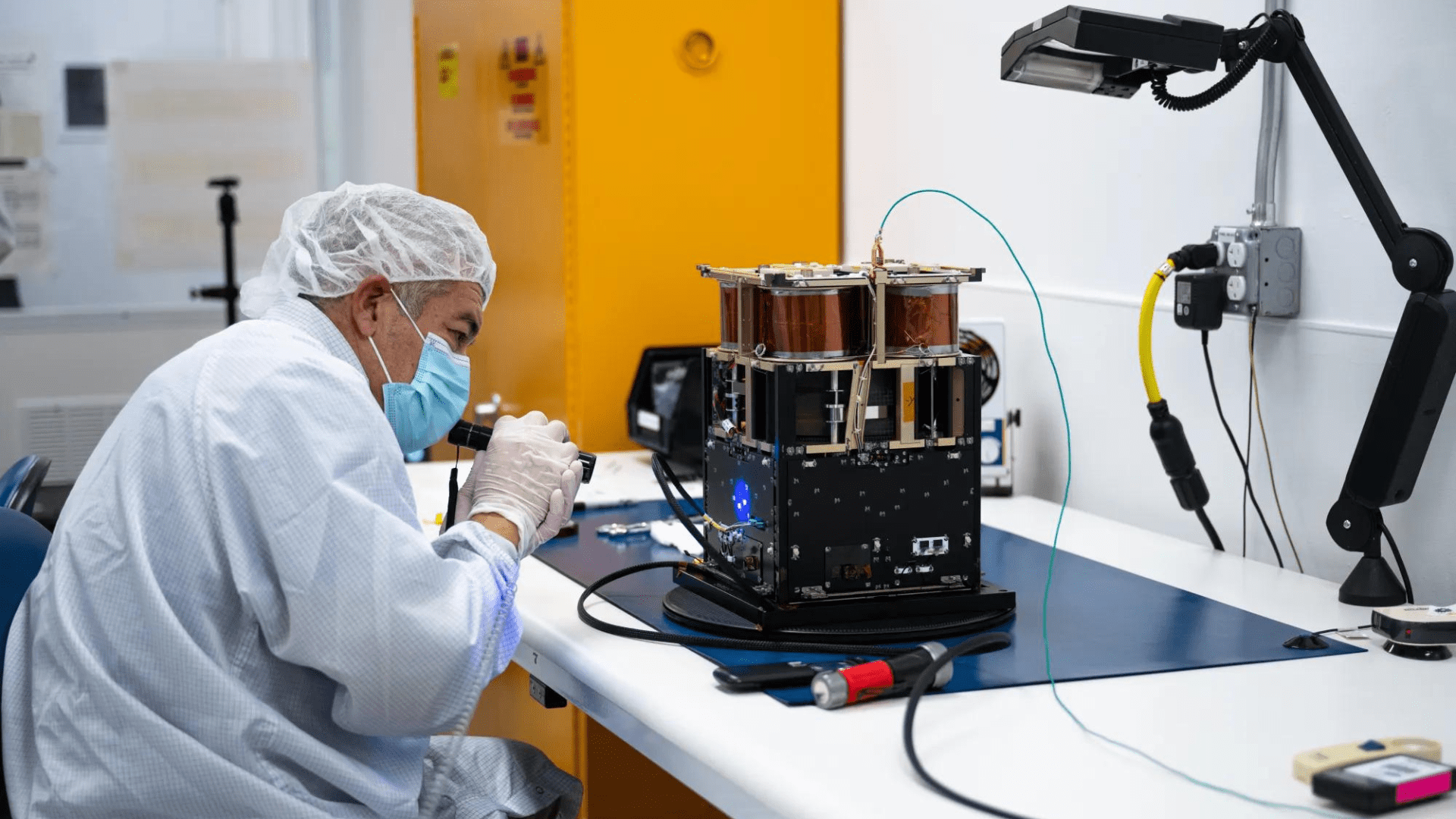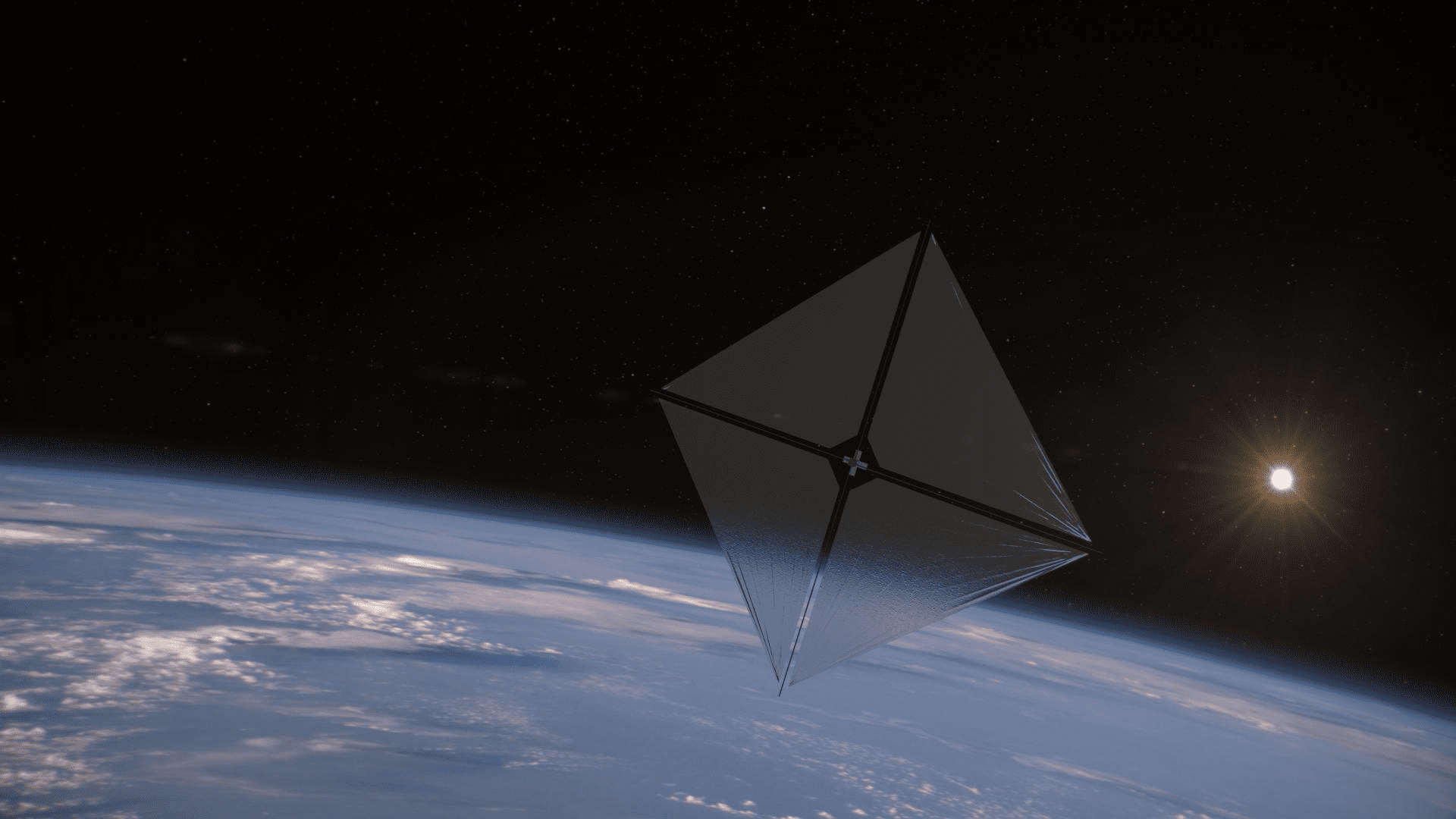Imagine setting sail in deep space just like you would on the open sea. It sounds like something from science fiction but it is a reality with NASA’s next-generation solar sail technology.
Solar Sail System

NASA’s next-generation solar sail technology, known as the Advanced Composite Solar Sail System, is ready to launch in April 2024. The agency believes the new technology can change the future of space travel and our understanding of the Sun. But, how does it work?
Solar sails use the pressure from sunlight for propulsion. The glider angles toward or away from the Sun so that photons bounce off the reflective sail to push the spacecraft. This could eliminate heavy propulsion systems and enable longer-duration and lower-cost missions. Although mass is reduced, solar sails are limited by the materials and structure of the booms, which are similar to a sailboat’s mast. But, with the new technology, NASA believes they can change the future of solar sailing.
Lightweight Sailor
When NASA launches the Advanced Composite Solar Sail System it will test new materials for solar sails. The demonstration uses a twelve-unit (12U) CubeSat to test a new composite boom. This boom is made from flexible polymer and carbon fiber materials that are stiffer and lighter than previous designs. Testing the new design is the primary objective of the deployment. However, NASA hopes to prove the sail’s performance.

After evaluating the deployment, NASA plans to test a series of maneuvers to change orbit and gather data for future missions involving much larger sails. Keats Wilkis, the mission’s principal investigator with NASA, said, “Solar sails need very large, stable, and lightweight booms that can fold down compactly.” She added, “This sail’s booms are tube-shaped and can be squashed flat and rolled like a tape measure into a small package while offering all the advantages of composite materials, like less bending and flexing during temperature changes.”
After reaching 600 miles above the Earth, the solar sail will unravel its composite booms. When fully deployed, the sail measures about 860 square feet. According to NASA, that is roughly the size of six parking spots. If the lighting conditions are right, the sail may be visible from Earth. Additionally, once fully expanded, the sail’s reflective material will be as bright as the brightest star in the sky.
Alan Rhodes, the mission’s lead systems engineer at NASA, said, “The hope is that the new technologies verified on this spacecraft will inspire others to use them in ways we haven’t even considered.”
Explore Tomorrow's World from your inbox
Get the latest science, technology, and sustainability content delivered to your inbox.
I understand that by providing my email address, I agree to receive emails from Tomorrow's World Today. I understand that I may opt out of receiving such communications at any time.
Future Solar Sails

A lot weighs on this deployment. A successful deployment opens up future missions if the solar sail’s lightweight composite booms work. For example, proving its capabilities opens the door to larger-scale missions to the Moon, Mars, and beyond.
Rhodes said, “The Sun will continue burning for billions of years, so we have a limitless source of propulsion. Instead of launching massive fuel tanks for future missions, we can launch larger sails that use ‘fuel’ already available.”
Because the sails use power from the sun, ultimately giving it unlimited thrust, it can take on missions that require a unique vantage point. For example, the unlimited thrust power allows the sail to study the Sun and its impact on Earth. NASA says the solar sails have been desired for a long time to carry early warning systems to monitor solar weather. This is important because solar storms could cause considerable damage on Earth like overloading power grids, disrupting radio communications, and affecting aircraft and spacecraft.
Rudy Aquilina, project manager of the solar sail mission at NASA Ames, said, “This technology sparks the imagination, reimagining the whole idea of sailing and applying it to space travel.”






